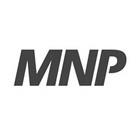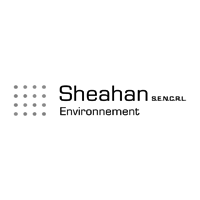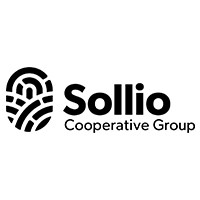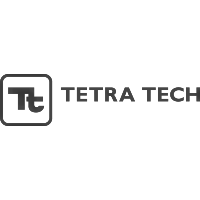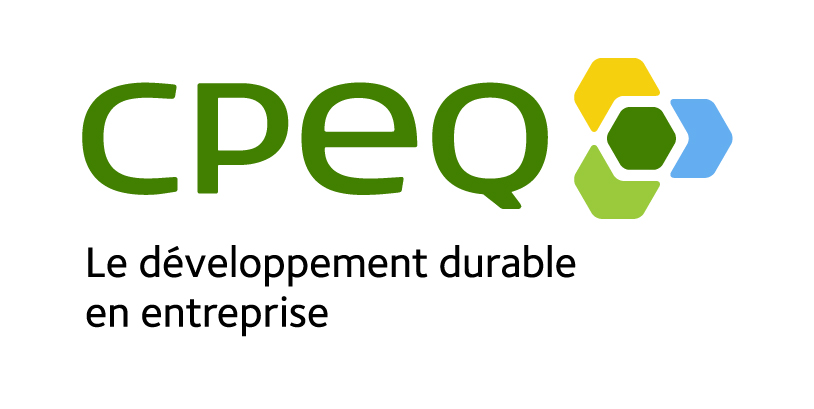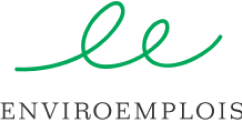 |
This chapter establishes |
2.1 Background on the Notion of Good Governance

Governance means all the information, monitoring measures and rules that make it possible to ensure the efficient operation and management of an organization. Its purpose is to provide the company’s strategic orientation and ensure that objectives are met, that risks are adequately managed and that resources are used responsibly.
Good governance should take into account both the economic component and the environmental and social dimensions resulting from a company’s activities. The social dimension includes good neighborly relations. Regarding good neighborly relations, the governance rules require not only respect for the neighbors’ interests but also consultation with the neighbors. Management of good neighborly relations should thus be part of the company’s evolutionary process.
To foster harmonious relations between the company and the neighborhood, it is important that all stakeholders know their roles and responsibilities, that the relevant information be collected, that the company monitor the situation, that the issues be identified, that the actions to be taken
be known and communicated clearly, that procedures be developed and implemented, and that the company get involved in the community, while focusing on consultation with the stakeholders.
During the implementation of such a process, the company will certainly be faced with an issue of internal mobilization. It will sometimes be necessary to shake up mentalities internally before an exercise may be undertaken that will integrate social issues into the management of nuisances caused by the company.
Several of the company’s departments will contribute to an approach like the one favored by the CPEQ in this Guide, in order to establish and maintain good community relations. The representatives of each of these departments will be involved in various ways and at various stages, as follows:
- Corporate management will commit to such a process by integrating it into its strategic plan, its risk management plan and its action plan;
- The Environment Department will get involved in identifying the nuisances caused by the company’s activities and their impact on the community, as well as in implementing measures to manage and reduce the risks resulting from these nuisances. It will also contribute to identifying the stakeholders and take part in preparing the action plan and setting up management procedures and systems;
- The Legal Department will produce the list of legal requirements applicable to the company and, more specifically, concerning neighborhood disturbances. It becomes the main reference point when neighborhood tensions arise;
- The Production and Operations Department will be involved in preparing the action plan, which will allow the identification of concrete measures, so that certain nuisances can be reduced and, if possible, eliminated. This department should work closely with the Environment Department to anticipate and prevent the nuisances likely to arise from a modification to the process or in production capacity;
- The Community Relations or “Public Relations” Department will identify the person responsible for the company’s internal and external communications. It will develop a communication procedure with the neighbors for various subjects. It will prepare an awareness raising, information and training program for employees and subcontractors and possibly for the community. It will prepare a communication plan. This department should steer the entire issue of the company’s involvement in the community. In a neighborhood tension scenario, this department is called upon to play a key role;
- The Environment Department jointly with the Community Relations or “Public Relations” Department will have to set up a liaison committee, identify its mandate and its modus operandi, and identify the members of the public and other stakeholders who should be invited to serve on this committee. The management will have to approve the creation of such a committee, its mandate and its operation. Without management support, the legitimacy of this liaison committee could be contested.
Once the resources are mobilized internally, the company, working in unison with all the sectors concerned, should proceed with a rapid internal inventory of its nuisances to eliminate the most obvious ones and then initiate its real process with the stakeholders. The stages are described in the following sections.
2.2 Identifying and Consulting the Stakeholders

In addition to the neighborhood, other individuals or groups of individuals may have an interest in a company’s activities or decisions. All of these players are referred to as “stakeholders” or “interested parties”. In a good neighbor initiative, it is important to have a good knowledge of these “stakeholders”, i.e. the individuals or organizations who have an interest in ensuring that the company’s activities are conducted according to the principles of social responsibility. These parties will then be consulted.
» Identifying the stakeholders
Regardless of whether they are external to the company, such as the local communities (including the neighbors), governments, the legislator, the media, social groups, pressure groups, NGOs, customers, insurers or financial institutions; or internal to the company, such as employees, directors, shareholders, partners, suppliers or subcontractors, stakeholders are demanding more transparency from companies as well as the adoption of exemplary behavior, respectful of the environment, public welfare and human rights.
Identifying the company’s internal and/or external stakeholders is a crucial stage in a process intended to establish good neighborly relations, because it will enable the company to determine the area impacted by its activities and to initiate the consultation, by which we mean the dialogue leading to identification and understanding of the stakeholders’ concerns.
Within the context of good neighborly relations, some stakeholders have a close relationship with the company and are directly affected by its activities. Other stakeholders, who are not directly affected by nuisances caused by the company, will also be identified.
In a good neighbor initiative, it is therefore recommended to begin by producing a socio-economic profile of the stakeholders in order to determine the current players, their values, their concerns, their interests, their perception of the company’s situation, their expectations and their needs in terms of information and communication.
This profile will allow the company to gain a better knowledge of the neighborhood and the stakeholders around it, to better distinguish the issues that may arise depending on these players’ values, to determine the best way to communicate and to implement mitigating measures, as and when needed. Subsequently, these parties will be invited to participate in the company’s good neighbor initiative. Identification of the stakeholders who will be solicited in the initiative is therefore a crucial stage.
» Consulting the stakeholders
The company should consult the stakeholders to identify the concerns and issues caused by its activities. It is impossible to produce an inventory of nuisances or a communication plan if the stakeholders have not been consulted in advance. The stakeholders’ concerns should be at the heart of the process. The earlier in the process the stakeholders are engaged, the better the chances that the initiative will succeed. It is however important to mention that the company should first perform the exercise of establishing a preliminary internal inventory in order to eliminate the more obvious nuisances, prior to starting the consultation process with the stakeholders.
» Drawing up a list of stakeholders
Table 1 below can be used to draw up a list of stakeholders and their concerns. This list is not exhaustive. It is recommended that this exercise be conducted by a committee made up of a representative of each sector of the company.
Table 1: Examples of stakeholders affected by good neighborly relations and their concerns
| STAKEHOLDERS | MAIN CONCERNS |
|---|---|
| Immediate neighbors (may include a school) | Quality of life and environmental protection |
| Local community, NGOs*, various associations, economic development bodies | Economic impacts The company’s impact on the environment and on the residents’ quality of life |
| Directors | Responsibilities in case of violation of laws and regulations |
| Employees | Environmental protection and respect for workers’ rights Job retention Responses to comments from the community |
| Government representatives (municipality, government departments, etc.) | Compliance with laws and regulations Respect for quality of life and the environment Effectiveness and stability of standards Sustained economic development while companies in the territory respect environmental standards Pressure from their fellow citizens |
| Customers | Reputation of their suppliers |
| Insurers, bankers | Financial impact of poor neighborhood relations on the company and means taken to reduce this impact if it is negative |
*Non-governmental organizations
Once the list of stakeholders is drawn up and their concerns are identified, it is recommended to analyze the stakeholders’ influence on the company and the company’s impact on these parties, and thus determine the priorities to be assigned to dealing with the nuisances. This exercise may be performed with the stakeholders by completing Appendix 1.
Once the analysis is completed, a list of nuisances should be drawn up and then cross-referenced with the stakeholders’ concerns. The company will thus be in a better position to develop its action plan to adopt specific measures with the aim of mitigating or reducing the nuisances. This exercise can be performed by completing the table in Appendix 2.
To allow the company to identify the nuisances properly, it is necessary to understand the notion of neighborhood disturbances.
2.3 Defining the Notion of Neighborhood Disturbances

The notion of neighborhood disturbances refers to nuisances suffered by a company’s neighbors as a direct result of its activities. These nuisances can come from dust or noise emissions, as well as odors, vibrations, radiation, lighting or other disturbances of the same kind that are likely to impair the public’s comfort, welfare, health or safety.
Section 976 of the Civil Code of Québec (C.C.Q.) encapsulates this notion of neighborhood disturbances, to some extent. Under this provision: “Neighbors shall suffer the normal neighborhood annoyances that are not beyond the limit of tolerance they owe each other, according to the nature or location of their land or local custom.” On the other hand, the neighbors do not have to accept abnormal neighborhood annoyances or nuisances, i.e. “neighborhood disturbances”.
Section 976 does not however define what constitutes an abnormal neighborhood annoyance or nuisance. It will be up to the company and the town planners to determine what they consider an abnormal nuisance.
One may think that most companies cause their neighborhood some nuisances due to the nature of their activities. On the other hand, should these nuisances for the neighborhood increase, they should be scrupulously and continuously assessed in order to determine whether they exceed the bounds of normality to become “abnormal”.
As for the courts, they will from now on analyze neighborhood disturbance cases from the point of view of the neighbor who suffers the nuisance. The legality of the company’s behavior will thus no longer be taken into account. Nuisances suffered by the neighbor will be the only determining factor to be analyzed.
This last aspect of the problem is of course what currently seems to be the most disturbing for the industry. In practice, once a case is before the courts, it is up to the court to rule on the specific conditions of operation of an industrial activity carried out in compliance with the regulations, for any situation in which a neighbor may argue that they are inconvenienced by this activity. By assessing the problem early on, the company and the planners will be able to exercise their judgment in this regard.
The company must thus attempt to determine whether its neighbors suffer nuisances and, above all, whether these nuisances are likely to be qualified as “abnormal”. If this is the case, it must establish various measures to mitigate, reduce and, if possible, eliminate these nuisances.
2.4 Producing an Inventory of Nuisances

Neighborhood disturbances can easily cause neighborhood relations to deteriorate. This is why, in a preventive context, it is essential to draw up the list of nuisances resulting from the company’s activities and discover their origin to determine their scope, impact and relevance.
The company should record in its inventory all potential nuisances, both perceived and real, that are attributable to its activities, regardless of whether they are partially controlled or not.
The production of this inventory is a subjective exercise, because certain activities are perceived by some as causing nuisances while being perceived differently by others. The collaboration of employees from various sectors and different hierarchical levels is important in the production
of this inventory, as it allows a more extensive analysis of the company’s operations. It is also imperative to consult with external stakeholders.
It is appropriate to consider not only the nuisances directly attributable to the company but also those for which it is accountable, such as nuisances resulting from suppliers’ activities. In producing this inventory, it is important to identify the sources of these nuisances and classify them in categories.
In parallel with the categorization of nuisances resulting from the company’s activities, it is important to draw up an inventory of other nuisances suffered by the neighborhood but coming from other sources. This categorization exercise for sources of nuisances caused by neighbors will make it possible to inform the neighborhood about the various sources of nuisances around it, so that the company does not always become the target of grievances or complaints for nuisances that may come from other sources.
The inventory of nuisances suffered by the neighborhood must of course be reviewed on a regular basis, because the environment can change and the company’s activities can evolve. A simple system of periodic consultation with the stakeholders can help determine whether specific equipment or a specific operation produce noise, dust, vibrations or other nuisances.
These observations should be recorded in writing in a register and then addressed. Table 2 below, which is not exhaustive, is a tool that allows the company’s activities to be linked to the nuisances suffered by the neighborhood.
Table 2: Examples of nuisances associated with certain activities
| Activities | NUISANCES |
|---|---|
| ► Too intense lighting of the site | ► Light pollution |
| ► Poor dispersion from source points (e.g. paint room chimney) | ► Odor problems ► Air quality |
| ► Dust emitted by the process and the operating equipment ► Receiving raw materials ► Unprotected bulk storage ► Shipping of raw materials ► Faulty or poorly maintained equipment ► Subcontracted trucking activities |
► Air quality (dust, noise and odor problems) |
| ► Badly maintained/neglected landscaping ► Aggressive postering, neglected or poorly integrated buildings |
► Unaesthetic sites (visual pollution) ► Visual pollution |
| ► Outdoor storage of residues ► Waste, refuse, scrap and rubbish ► Accumulation of organic materials ► Construction or demolition debris ► Scrap metal, tires, automobile parts or carcasses ► Storage of potential contaminants unprotected from weather ► Uncovered storage of bulk products |
► Odor problems ► Spill of undesirable products ► Presence of vermin ► Contamination problems if a person ventures onto the site ► Soil and groundwater contamination |
| ► Continuous operation (24/7) ► Night-time receiving and shipping of raw materials ► Passing trains, loading and unloading ► Ventilation and air conditioning of buildings ► Blasting |
► Noise problems and possibility of vibrations |
| ► Truck traffic without tarps on the public thoroughfare ► Trucking and railway transportation |
► Risk of collisions, accidents with pedestrians ► Air quality (dust emissions) |
| ► Deficient outdoor maintenance | ► Proliferation of weeds (ragweed) |
Once the nuisances are identified, it is important to know the legal requirements applicable to the company and thus establish, based on certain identified nuisances, whether it complies with the regulations, and whether its liability is at risk.
2.5 Identifying the Applicable Legal and Other Corportate Requirements

Under a preventive approach to neighborhood disturbances, it is recommended to identify the list of legal requirements applicable to the company and to establish whether the company complies with this legislation. It is also appropriate to verify whether the company honors the commitments it made in the course of its applications for permits and certificates of authorization, especially if it undertook to comply at all times with the noise criteria of the Ministère du Développement durable, de l’Environnement des Parcs (MDDEP), for example.
Since many companies are subject to corporate requirements, it is also important to draw up the list of these internal requirements.
By knowing the legal and corporate requirements it must meet, the company will be able to offer training programs to its employees and to reduce the nuisances generated by its activities. In drawing up this requirements list, it is appropriate to identify the relevant federal legislation, provincial legislation, including the Civil Code of Québec, and municipal by-laws. Aside from identifying the applicable legislation, the company should of course also ensure that it complies with it.
For a finely-tuned and detailed analysis of the applicable legislation, see Appendix 3 of this Guide.
» Identifying the laws, regulations and directives applicable at the federal level
The company should produce an inventory of the laws and regulations that apply to its activities at the federal level and, more specifically, relating to neighborhood disturbances.
» Identifying the laws, regulations and directives applicable at the provincial level
The company should draw up the inventory of laws and regulations that apply to its activities at the provincial level and, more specifically, relating to neighborhood disturbances. Section 976 of the Civil Code of Québec establishes the rule to follow at the provincial level relating to neighborhood disturbances.
The Draft Bill, Sustainable Regional and Local Land Use Planning Act, whose purpose is to overhaul the Act respecting land use planning and development, does not contain any specific provisions to prevent the problem of neighborhood disturbances. The CPEQ intends to monitor this issue and the drafting of the new government guidelines so that this problem is taken into
account.
» Identifying the by-laws and directives applicable at the municipal level
Québec’s municipal legislation2 confers broad powers in the regulation of public nuisances to municipalities and territorial communities. This is a historical power of municipal political bodies, and most municipalities adopted by-laws a very long time ago on community noise, dust, odors, clean-up of the atmosphere, etc. Without establishing an exhaustive inventory, it is appropriate to mention two characteristics of these by-laws.
One should first bear in mind that the regional county municipalities (RCM) and the municipalities have regulatory powers. The development plan drawn up by the RCM establishes the major land use guidelines. In this sense, the RCM has the power to limit conflicts of use by drawing up its guidelines to respect buffer zones between residential and industrial zones.
The municipality has a similar power with its master plan and zoning by-laws. Zoning is often used by municipalities to control or prevent the appearance of certain nuisances. Municipal nuisance by-laws generally set standards that limit substance or noise emissions that are considered detrimental to public health or public order. Exceeding the limit set by a release or emission standard is penalized by a fine and a compliance order. In addition, the municipal standards governing public nuisances are closely associated with zoning. As a consequence, noise or dust release levels tolerable in an industrial zone can obviously be prohibited in a residential zone.
If the land use rules have in the past guaranteed zoning stability, this regulatory practice undoubtedly could prevent many neighborhood conflicts caused by nuisances of industrial origin.
Unfortunately, however, under the pressure from urban sprawl, the preexisting restrictions on industrial land use are not always respected under municipal planning policies. Many residential developments have thus been authorized immediately adjacent to industrially-zoned land, without any buffer zone being imposed on their developer. This leads to problematic situations, similar to the St. Lawrence Cement case, where the new residents turned to the civil courts to obtain redress regarding the industrial activities that disturbed them.
Once the stakeholders have been identified and consulted, the nuisances and their impact identified and analyzed, and once the identification and analysis of compliance with the established legislation is done, the implementation of an internal risk management program, an action plan and a complaint response procedure is strongly suggested. These will allow the company to adequately control its risks and to adopt concrete measures to reduce and, if possible, eliminate its nuisances.
2.6 Developing Risk Management and Reduction Measures, an Action Plan and Complaint Response Procedures

In line with good governance and good neighborly relations, the company should implement various measures to continuously assess the potential risks to which it is exposed through its activities in relation to its neighbors. Pressure from the neighborhood, the possibility of a class action against the company, and the mobilization of stakeholders against the company due to the nuisances it causes are all risks likely to impact the company’s profitability, activities, production hours or development, as well as cause concern amongst its business partners. The setting up of a continuous risk management procedure will thus allow the company to identify the greater risks and set their priority levels. This means establishing a continuous watch system in agreement with the stakeholders.
In addition, the company should develop an action plan for the adoption of concrete measures that will allow the allocation of the necessary financial and human resources to tackle a potential risk or a real problem.
Once the action plan and the risk management procedure are drawn up, it is essential to implement a complaint response procedure to offer the public an official communication channel and to allow efficient management of complaints, by clearly defining the procedure for the internal and
external stakeholders.
One should remember that implementing such measures requires a budgetary commitment, an allocation of resources, without which it will be difficult, if not impossible, to go forward.
» Establishing a program to manage, control and monitor risks
From the analysis of the nuisances caused by its industrial activities, the company will be able to establish a risk control and monitoring program.
To this end, the company can install permanent measuring equipment. The permanent equipment normally operates continuously and often has an alarm system when certain thresholds are exceeded. The company should establish the monitoring frequency according to the type of nuisance and the degree of risk initially assessed.
The management, control and monitoring program for the risks associated with neighborhood nuisances should also account for any change made to the company’s activities, such as variations in intensity, in the duration of an existing activity, a change of equipment or process, or the addition of a new activity.
When the company therefore considers making changes, it is appropriate to assess the temporary and permanent nuisances that will result from the project. It would also be desirable to consult the stakeholders early on in order to take their concerns into account and avoid nuisances resulting from these changes. This type of consultation will lead to better results if the company presents its objectives and its constraints to the stakeholders in advance. It is not desirable to present a completed project to these parties, without a context, that offers little opportunity for changes. This would only be an information session and not a public consultation.
The company therefore would find it beneficial to review its inventory of nuisances on a regular basis, in order to adjust to its community, its activities and its new projects.
» Preparing an action plan to minimize or, if possible, eliminate nuisances
The action plan encompasses a series of concrete measures that a company intends to take in order to innovate and propose solutions fostering good neighborly relations.
In order for the risk management, control and monitoring program to enable the company to identify the priority nuisances to be addressed in the short, medium and long term, it is desirable, at the development stage of the action plan, for the company to consider the feasibility of reducing and, if possible, eliminating each type of nuisance previously identified.
Consequently, to reduce the effects on the public and achieve immediate results, it may prove more effective for the company to take quick action to reduce or, if possible, eliminate several minor nuisances, which nonetheless have a significant cumulative effect, rather than immediately tackle a major nuisance that could require a complex long-term solution. What counts is to be able to show that the company is making progress.
To maximize the possibilities of mitigating a specified nuisance, the company should inquire about the best existing methods and identify the operational practices that have proven effective. For this purpose, the CPEQ suggests that the company examine its management processes and methods, particularly those related to transportation and logistics, because these are the operations most often at the core of neighborhood disturbance cases.
The company can also adopt site maintenance directives regarding cleanliness, drainage and surface run-off, dust emissions and disposal of treated residual water. In some cases, poor equipment maintenance will affect performance and result in substance emissions. It is therefore appropriate to determine the optimum parameters, and maintain and calibrate the equipment to ensure that it is in good working order at all times.
This process must be iterative, meaning that the results of the action plan should be regularly assessed under the risk control and monitoring program. The action plan should then be amended and updated to allow continuous improvement and to account for any change occurring within the company.
Once the action plan is set up, the company should draw up procedures and a complaint response system.
» Establishing a neighborhood complaint response system
Despite the actions taken under an action plan, a company’s activities may nonetheless cause nuisances for its neighborhood. In a preventive context, the establishment of a complaint response procedure for neighborhood disturbances is unavoidable in order to give the employees proper guidance. This also sends a very strong internal and external signal on how rigorously the company addresses the issue of neighborhood disturbances.
At the outset, it is essential to appoint a person responsible for communications on good neighborly relations. This may be the person responsible for the environment, someone from the Human Resources Department, or from the Community Relations or Public Affairs Department. The chosen individual must have the necessary aptitudes for this role, including innate diplomacy, patience, excellent listening skills and empathy, as well as the necessary rigor to follow procedures and ensure proper follow-up of requests or complaints.
A decision flow chart could be produced to define the procedure to be followed when an incident occurs. Appendix 4 contains a decision flow chart that can be helpful to the company. This flow chart allows the company’s executives to approve the proposed actions in advance.
When the procedure is approved by the officers, the person responsible for internal and external communications for good neighborly relations can act within a clear and structured context. This person’s intervention will be more effective because they will be able to respond effectively to the complainants and resolve the situation within the stipulated deadline. This flow chart will also allow for a deputy to follow the same procedure and fill in for the responsible person in their absence.
Company employees (and anyone working on the company’s behalf) likely to interact with a neighbor of the company, should attend the training sessions on the communication process to follow when a complaint is made.
The training should address two essential items. First of all, it is important to inform the employees properly about how to respond to a neighbor. In this instance, empathy is essential. If the employee is not the person responsible for corporate communications, they will have to limit their intervention. Employees must not give their opinion, but report what the neighbor has told them.
In the case of a complaint or a question concerning the company, the employee must take the person’s contact information and inform them that someone from the company will contact them shortly. At this stage, it is important to outline what information must be conveyed to the company in order to ensure proper handling of the complaint. Although complaint follow-up is essential, it is important to tell complainants what the next steps will be so that they are reassured.
The second aspect to be presented in this training concerns the chain of communications to follow when interacting with the neighborhood. Employees must understand the importance of reporting any communication with a neighbor, regardless of whether it is a complaint, a comment, a question or even positive feedback.
The opportunity to feel the pulse of the community is critical. When well-managed, it enables the company to have the upper hand in its relations with the neighborhood.
Finally, employees must know the process for recording any communication with a neighbor in the database.
The complaints system should allow the complainant to register a complaint rapidly and obtain an answer within a very short time3. Here are a few examples of actions and tools likely to be found in such a system:
- Provide the neighborhood with a communication tool so that individuals can submit their comments or complaints (telephone line, Internet link or fax);
- Allow individuals to speak to the person responsible for community relations who will answer their questions or receive their comments;
- Analyze the situation rapidly after receiving a complaint and take appropriate action;
- Follow up with the author of the complaint;
- Document the situation (nature of the complaint, results of the analysis, remedial actions taken) so that this data can be useful in the event of a lawsuit.
Depending on the company’s size, specific procedures can be developed to explain the steps to follow in case of a complaint. These procedures can be integrated into an environmental management system.
Appendix 5 presents examples of complaint response procedures:
- Processing of a complaint by the supervisor;
- Processing of complaints for damage to cars;
- Processing of complaints for damage to residences.
It is recommended that situations for which a company receives several complaints be reported to the municipality. The municipality will thus be able to inform the people who contact them and collaborate with the company in looking for solutions.
It is important at this stage to reiterate that, in the event that major changes should occur within the company which is likely to result in nuisances, it would be preferable to alert the neighbors. A meeting could even be envisioned to sound out opinions and to take the neighborhood’s concerns into account.
A letter could be sent to the people likely to be annoyed by unusual work. This letter should give the description of the work, its duration, its anticipated start and end dates, the hours during which the work should be performed, the nuisances that will result from it and the contact details of the company’s representative who will be able to answer questions. This letter should be phrased politely and the benefits of this work for the community should be specified. Appendix 6 presents an example of such a letter.
To conclude this section, let us remember that the presence of contaminants within the limits of a company’s land must be disclosed to the neighbors concerned under the Environment Quality Act. The person responsible for communications would thus find it beneficial to meet the neighbors concerned to explain the problem, after which a letter could be sent to them.
- 2. Section 463(1) of the Cities and Towns Act (R.S.Q., Chapter C-19), Section 546(l) of the Québec Municipal Code (R.S.Q., Chapter C-27.1) and Section 4 of the Municipal Powers Act (R.S.Q., Chapter C-47.1)
- 3. For greater efficiency, it would be very desirable for this information to be compiled promptly in a computer database. This would facilitate the production of annual reports and trends analysis, and thus to determine whether the company is improving.







